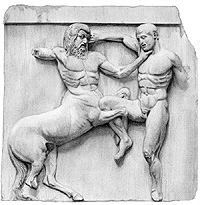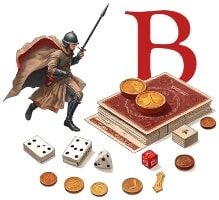With eight days left, before I fight Sean, Ron was nice enough to help me prepare even though he’s having trouble recovering from his leg/hip/pelvis injury. Early on, Ron was very interested in learning the triangular footwork. This was somewhat limited by his injury. So we settled on developing Ron as a step-and-drag stick fighter. In other words, Ron’s training to fight with a stick in the same way heavy weight hall-of-famer, Ken Norton, boxed, by using the rear leg as a brace. This works well for Ron for two reasons: he’s big with a long reach, and he has good instincts.
To fight as a step-and-drag fighter in any sport or spontaneous situation, the boxing qualities you need to have are good instincts, be relaxed, and use checking and shielding. These are some of his primary qualities, which he shares with other boxers. When adapting to stick fighting, fighters from different base arts behave differently. Ron’s base is boxing. More importantly, Ron wasn’t a highly skilled boxer but a guy who found a way to impose his will against more skilled boxers, which makes him more adaptable to fighting when injured. This is something Ron shares with all boxers who take up stick fighting, who have all faced their betters in the gym or in the ring. This contrasts sharply with the martial artist who takes up stick fighting, who is coming to contact weaponry from a dominant perspective. Therefore, the dominant martial artist who seeks to add weapons to his skill set tends to face a greater psychological hurdle when facing an experienced stick fighter than a boxer who is used to being beaten up in the gym.
Checking and shield use usually come easier to the boxer, as they’re used to keying on elbows and shoulders with their hands, whereas the martial artist and people from other backgrounds such as wrestling, as well as people new to fighting altogether, tend to focus on the weapon. The boxer is trained to focus on the person, and this develops instinct.
Ron and I trained for four rounds on an asphalt court to avoid Ron’s dead foot mistepping and to save my ankles for the fight. I sprained my left ankle getting a cup of coffee at work a few weeks ago, so uneven ground is risky for me. When I fight, I’ll wear lace-up ankle braces.
Round one:
Single stick, in an eight-foot square ring. This round went about 10 minutes, with Ron dominating the space with his checking hand and using it to turn my shoulder, preventing me from scoring combinations while close. I tried to focus on hitting Ron’s hand as much as possible, because he’s still a beginner and this is part of the progression.
Round two:
We moved to a 24-foot circular ring. This gave me an opportunity to work on entering and exiting, and passing on a taller fighter, which gave us an opportunity to test the range Ron can develop with a step and drag. In a ring this large, we want both fighters to commit to contact, not orbit, which is the normal habit in a ring this large. This round only lasted five minutes because of the exhausting nature of the footwork, with both of us developing tactics, which we were able to develop due to our commitment to light contact and Ron’s control, which is much better than normal for a person new to stick fighting. I used reverse triangles to get around him and forward triangles to snipe at him and get back out. He successfully countered this by getting aggressive with the step and drag, causing me to default to pass slashes to the body and lunging chops to the head. We ended up clinching at the end.
Round three:
Double stick in the large circle. This went between five and seven minutes. Nobody’s good at double stick. Nobody. A lot of people can drill double stick amazingly well, but nobody does it well in a fight. Ron’s aggressive commitment to contact made this an exhausting round. I was working over his hands, and we were trading head shots, and as soon as my lateral movement began to fail, Ron sensed it, and he was on me. The round ended with me skewering him with a stick stab, as I was nearly pinned down under his Frankenstein form. His instinct enabled this step-drag, Frankenstein-like style of stick fighting, and as soon as my legs began to tire from the lateral movements, shifts and the lunges, he came on. We enjoyed this round the most, and Ron was really impressed with the potential violence of stick fighting after this round of light contact.
Round four:
Double batons in the eight-foot square ring. The reduction to this small space with the shorter weapons made for a good flow from the large space with the long weapons. The two short weapons really nullified Ron’s checking hand, which helped him impose his size in the small space, giving me the advantage which I exploited, scoring heavily with Ron countering to the head with singles. He managed to strip my left stick away with an overhook of his right arm. Then I moved up my foot pace, used reverse triangles to get to his outside, and began working him over with triple hits to the head, this being a rare occasion when fanning works.
The entire session with breaks lasted 40 minutes. There were no bruises and no mobility injuries.











